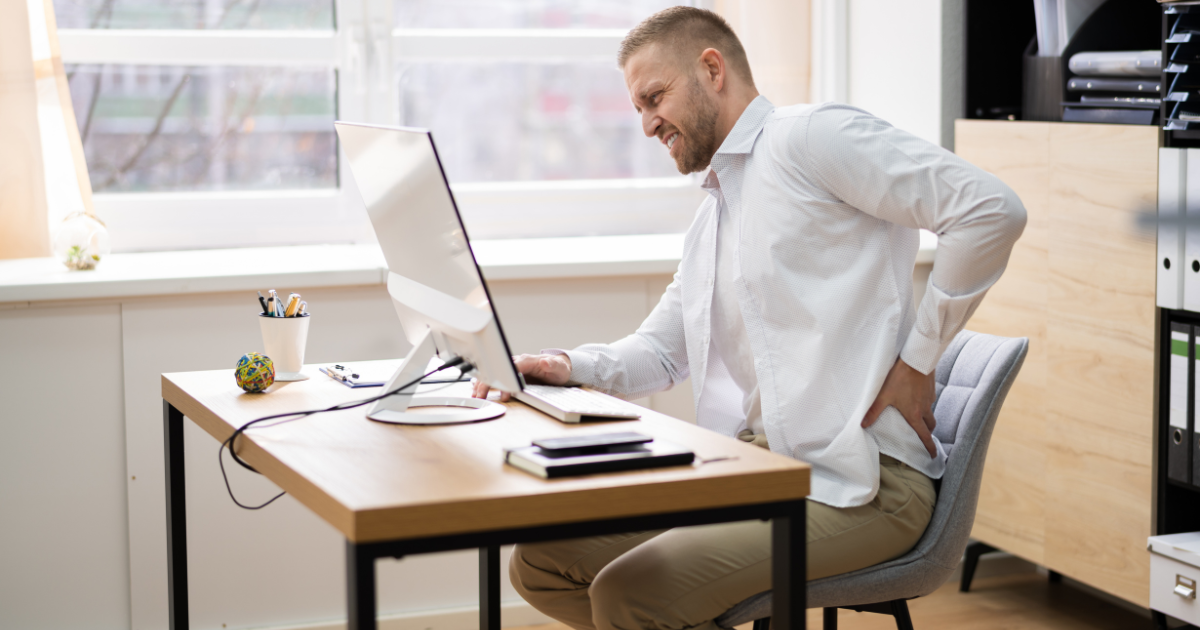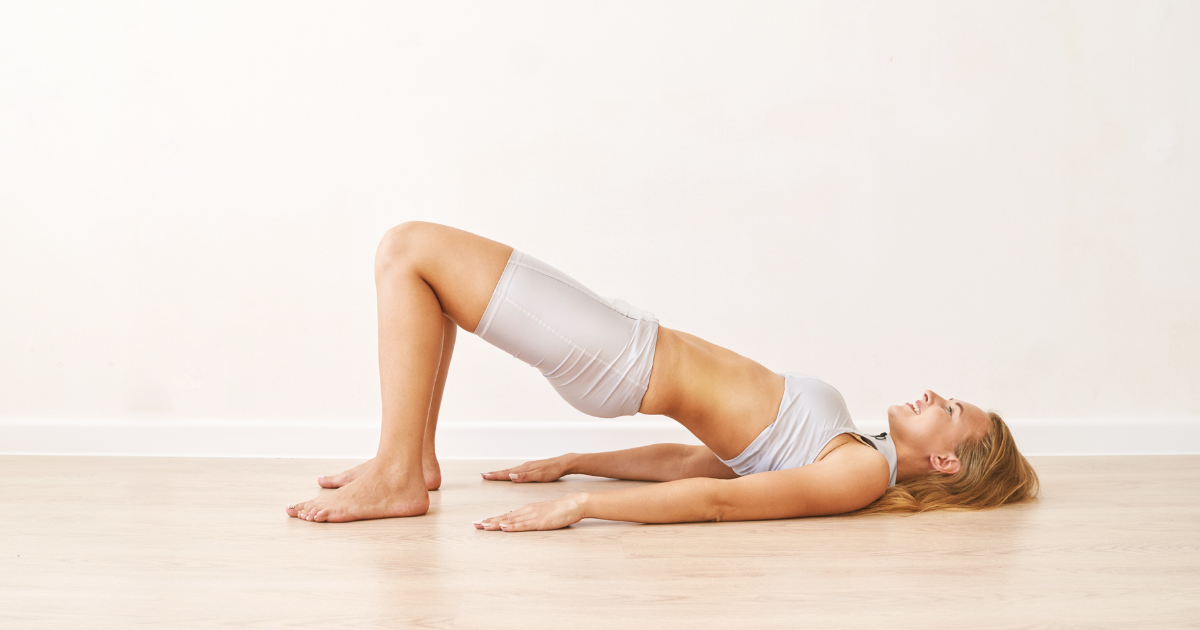How Sitting For Long Periods Can Affect Hip Pain
Key Takeaways
- Sitting for long periods can lead to tight hip flexors, poor posture, and weakened gluteal muscles, all of which can cause or worsen hip pain.
- Common causes of hip pain while sitting include tight hip flexors, poor posture, weak glutes, and conditions like hip bursitis.
- Simple solutions like LUMINAS Hip Pain Relief Patches, regular movement, and stretching can help treat hip pain from sitting.
- If your hip pain persists or becomes severe, consult a healthcare provider or physical therapist for a personalized treatment plan.

Picture this: you’ve been sitting at your desk for hours, lost in work or binge-watching your favorite show, and suddenly, your hips start to ache. That familiar stiffness creeps in, making it hard to get comfortable or even stand up straight afterward.
At LUMINAS, we understand how frustrating it can be to deal with hip pain from sitting too long. That’s why we created the LUMINAS Hip Pain Relief Patch—a fast, natural solution designed to provide targeted relief exactly where you need it. Our patches stand out from other treatments because they work without chemicals, pills, or messy creams. Using advanced, electron-based technology, our patches offer long-lasting pain relief you can feel within minutes, making them perfect for treating hip pain while you're at work, at home, or on the go.
In this blog, we’ll dive into why sitting for long periods can lead to hip pain, explore common causes, and most importantly, provide simple and effective solutions to help you manage and reduce hip pain.
What Can Cause Hip Pain While Sitting?
When you sit for prolonged periods, your hip flexors—the muscles in the front of your hips—stay in a shortened position. This lack of movement can cause a lot of issues that lead to pain over time.
Here are some common causes of hip pain when sitting:
1. Tight Hip Flexors
Pain and stiffness often occur when your hip flexors remain in a shortened position for too long due to inactivity. Over time, this impacts hip function leading to tightness and stiffness, and these tight muscles can cause discomfort when you move or stand up. The lack of stretching or movement keeps the muscles tense, and this can result in pain that radiates from the hips to the lower back.
2. Poor Sitting Posture
Sitting with poor posture, such as slouching or leaning to one side, puts uneven pressure on your hip joints. Over time, this stress causes muscle imbalances and strains the ligaments and muscles surrounding the hip bone. Poor posture can lead to long-term joint and muscle problems.
3. Weak Gluteal Muscles
Sitting weakens your glute muscles, which play a crucial role in supporting your hips and lower back. When these muscles weaken, they provide less stability for the hip joint, making it more vulnerable to strain. This weakness often results in pain, especially during movement or prolonged periods of sitting.
4. Hip Bursitis
Hip bursitis is a condition where the bursae, which are small fluid-filled sacs that cushion the hip joint, become inflamed. This can be caused by repetitive motions or pressure from sitting for an extended period. It often results in a dull ache or sharp pain on the outside of the hip and can exacerbate hip pain when sitting for too long.
5. Nerve Compression
Sitting for too long can also compress the sciatic nerve, which runs from your lower back down to your legs. This compression can cause hip pain, which may radiate down the leg, making it feel like a sharp or burning pain. This type of pain is commonly referred to as sciatica and is aggravated by sitting for a long time, especially if posture is poor.
6. Structural Issues
Sometimes, structural problems like hip dysplasia (an abnormal hip socket) or labral tears (tears in the cartilage surrounding the hip joint) can cause pain while sitting. These conditions can result from overuse, injury, or even congenital abnormalities, and may require medical attention.
7. Arthritis
Osteoarthritis and rheumatoid arthritis can lead to the degeneration of the hip joint, causing joint pain when sitting or moving. Arthritis in the hips often presents as a dull ache or stiffness, especially after sitting for a long period. This condition is more common in older adults but can affect people of all ages.
8. Tight Piriformis
The piriformis muscle, located deep in the buttock, can also contribute to hip pain when it becomes tight or irritated. When this muscle is too tight, it can press on the sciatic nerve, causing hip pain and even pain down the leg. This is known as piriformis syndrome and is often exacerbated by sitting for too long or repetitive motions like walking or running.
Simple Solutions to Ease Hip Pain
The good news is that you don’t have to live with hip ache from sitting all day. There are several effective strategies to help reduce pain, keep your hips happy, and improve your overall hip health.
1. Try LUMINAS Hip Pain Relief Patches
If you need fast relief, try LUMINAS Hip Pain Relief Patches. These patches offer a natural, targeted pain relief solution that works without chemicals or pills. Our advanced electron-based technology works within minutes, providing pain relief up to 24 hours.
You can wear the patches throughout the day while working, commuting, or even exercising. They’re designed to help reduce inflammation, soothe discomfort, and alleviate pain caused by sitting or poor posture. The discreet nature of the patches makes them a convenient solution for those dealing with hip pain on the go.
2. Transform Your Sitting Setup
A well-designed workstation can make a world of difference for your hips. Make sure your chair supports good posture, with your feet flat on the floor and your hips slightly higher than your knees. Adding lumbar support and adjusting your desk and chair height can ease strain on your hips and lower back, helping to prevent discomfort from sitting for too long.
3. Stretch It Out
Stretching is an excellent way to relieve tension in your hips and improve flexibility.
One effective stretch is the hip flexor stretch, which helps lengthen the muscles in the front of the hips that become tight after sitting for extended periods:
- Step 1: Stand up and step one foot forward into a lunge starting position.
- Step 2: Drop your left knee to the floor, keeping your right knee bent at a 90-degree angle.
- Step 3: Lean forward until you feel a stretch in the front of your hip and thigh.
- Step 4: Hold for 20-30 seconds, then switch legs.
Regular stretching keeps your hip muscles flexible, improves mobility, and can significantly reduce pain. Incorporate additional stretching exercises like the piriformis stretch or seated figure-four stretch to target the deeper muscles that can also contribute to hip pain.
4. Fix Your Posture
Poor posture is a leading cause of hip pain when sitting. Slouching, leaning to one side, or crossing your legs puts uneven pressure on the hip joints and can cause muscle imbalances over time.
To avoid this, focus on maintaining proper posture:
- Sit with your feet flat on the ground.
- Keep your back straight, with your hips slightly higher than your knees.
- Make sure to keep your shoulders relaxed and avoid leaning forward or to one side.
Using an ergonomic chair with proper lumbar support can help maintain the natural curve of your spine and reduce pressure on the hips. If you’re sitting for long hours, consider adding a cushion or lumbar support to your chair. This helps alleviate strain on the hips and improves comfort.
5. Strengthen Your Hips
Strengthening the muscles around your hips is key to preventing and managing pain. Strong glutes, hip flexors, and core muscles provide stability to the hip joint and reduce the risk of injury or pain during movement.
Incorporating exercises like glute bridges into your routine is a great way to strengthen these muscles:
- Step 1: Lie on your back with your knees bent and feet flat on the floor.
- Step 2: Lift your hips off the ground, squeezing your glutes at the top.
- Step 3: Hold the position for a few seconds, then lower your hips back down.
- Step 4: Repeat 10-15 times.
In addition to glute bridges, you can include exercises like lunges, squats, and hip abductions to further strengthen your hip muscles. Regularly strengthening these muscles not only helps relieve pain but also enhances overall hip function and flexibility.
6. Incorporate Regular Movement into Your Routine
Preventing hip pain involves staying active throughout the day. Even if you have a desk job, finding small ways to stay active can make a big difference.
For example, take the stairs instead of the elevator, walk during phone calls, or set a reminder to stand up and stretch every hour. Incorporating these habits can help maintain hip mobility and prevent the pain caused by extended periods of sitting.

Prevent Hip Pain in the Long Run
Once you’ve found some relief, it’s important to work on preventing hip pain from returning. Here are a few habits to keep your hips in good health:
- Take Frequent Breaks: Whether at work or home, be mindful of your sitting habits to avoid sitting for long periods. Stand up and move around every 30 minutes.
- Keep Stretching: Regular gentle movement and stretches for your hips and buttock muscles can help keep stiff hips flexible and reduce future pain.
- Exercise Regularly: Strengthening your core muscles and hips with exercises like lunges and squats helps maintain hip health and reduces the risk of injury.
When to See a Doctor
If your hip pain becomes severe or lasts for a long time, it’s important to consult a physical therapist or healthcare professional. Conditions like hip bursitis, arthritis (including rheumatoid arthritis or psoriatic arthritis), or a problem with the sciatic nerve could be causing the pain. A physical therapist can design a personalized treatment plan to help you recover and manage hip pain.
Take Action for Pain-Free Hips
Sitting doesn’t have to lead to severe pain in your hips! By taking a few simple steps—moving more, reducing hip pain with stretches, and using tools like LUMINAS Hip Pain Patches—you can manage your pain and keep your hips in great shape.
Try your first pack here!
Remember, managing hip pain is easier when you’re proactive. Take care of your hips now, and they’ll take care of you later!









